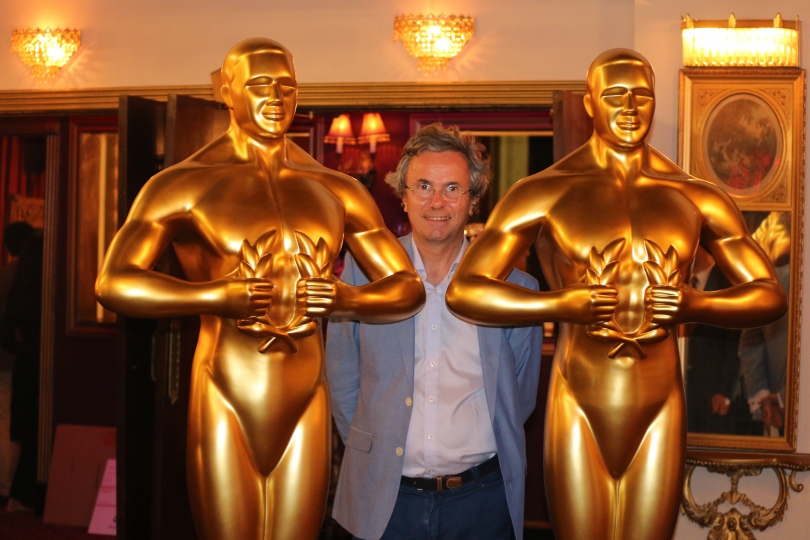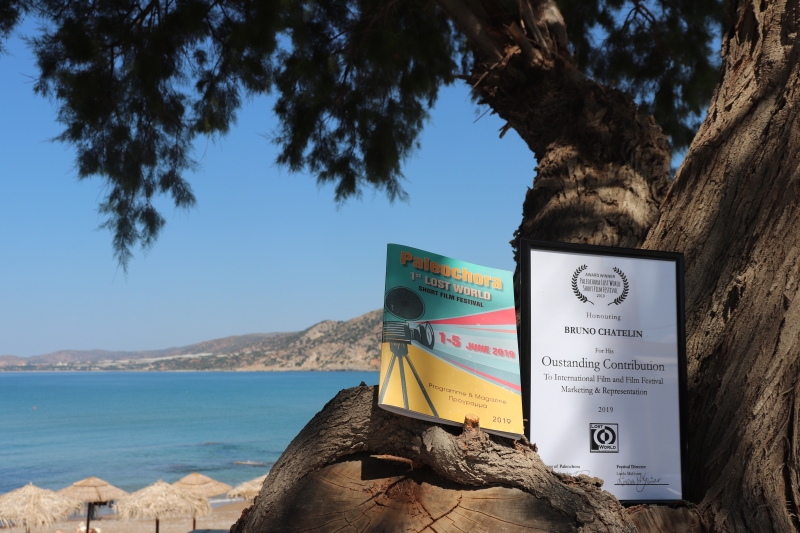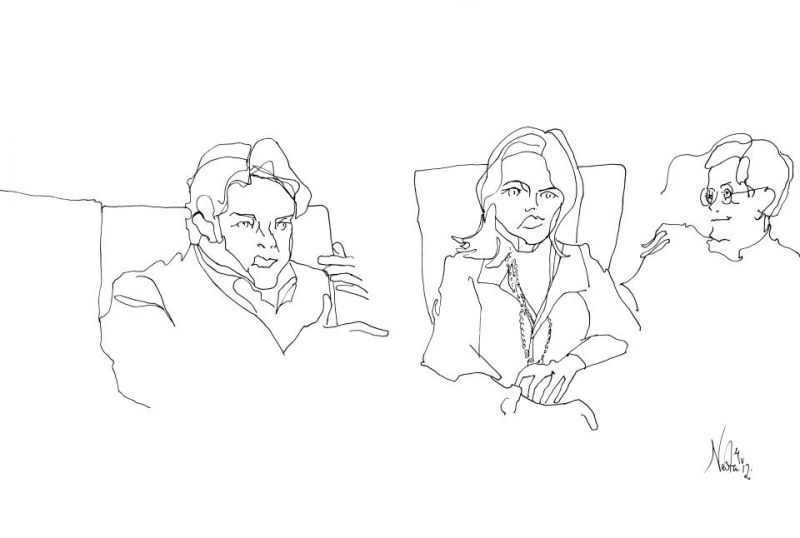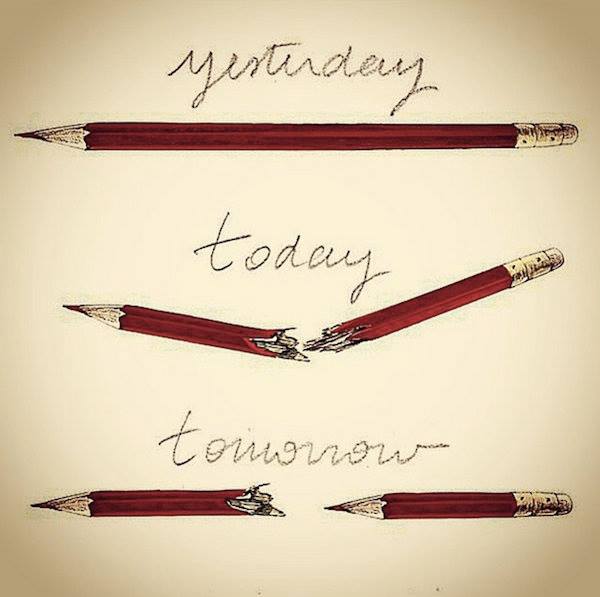|
|
||
|
Pro Tools
FILMFESTIVALS | 24/7 world wide coverageWelcome ! Enjoy the best of both worlds: Film & Festival News, exploring the best of the film festivals community. Launched in 1995, relentlessly connecting films to festivals, documenting and promoting festivals worldwide. Sorry for the disruptions we are working on the platform as of today. For collaboration, editorial contributions, or publicity, please send us an email here. User loginActive Members |
Editor
THE NEWSLETTER REACHES 171 000 FILM PROFESSIONALS EACH WEEK (december 2023) .Share your news with us at press@filmfestivals.com to be featured. SUBSCRIBE to the e-newsletter.
MEET YOUR EDITOR Bruno Chatelin - Check some of his interviews. Board Member of many filmfestivals and regular partner of a few key film events such as Cannes Market, AFM, Venice Production Bridge, Tallinn Industry and Festival...Check our recent partners. The news in French I English This content and related intellectual property cannot be reproduced without prior consent.  Panasonic will reveal at CES the world’s first professional, fully-integrated Full HD 3D camcorderPanasonic Corporation will release the world's first* professional, fully-integrated Full HD 3D camcorder in Fall 2010. The company will begin taking orders in April. Engineering samples of the professional Full HD 3D solid-state camcorder will be exhibited at the Panasonic booth (Las Vegas Convention Center, Main Hall, #9405) at the 2010 International CES in Las Vegas, USA, from January 7-10.
This Full HD 3D camcorder will offer the following core benefits: Easier to Use Current 3D systems are large-scale setups in which two cameras are fitted to a rig in parallel, or vertically intersect across a half-mirror. Separate recorders are also required. In Panasonic's new Full HD 3D camcorder, the lenses, camera head, and a dual Memory Card recorder are integrated into a single, lightweight body. The camcorder also incorporates stereoscopic adjustment controls making it easier to use and operate.
The twin-lens system adopted in the camcorder's optical section allows the convergence point** to be adjusted. Functions for automatically correcting horizontal and vertical displacement are also provided. Conventional 3D camera systems require these adjustments to be made by means of a PC or an external video processor. This new camcorder, however, will automatically recalibrate without any need for external equipment, allowing immediate 3D image capture.
More Flexible The solid-state memory file-based recording system offers greater flexibility to produce Full HD 3D videos in more challenging shooting environments. The camcorder is lighter weight and smaller than current 3D rigs, while providing the flexibility of handheld-style shooting. Setup and transportation is simplified, making it ideal for sports, documentary and filmmaking projects.
Solid-State Reliability and Workflow Right and left Full HD video streams of the twin-lens 3D camcorder can be recorded as files on SDHC/SD Memory Cards, ensuring higher reliability than on other tape, optical disc, HDD or other mechanical-based recording systems. This solid-state, no-moving-parts design will help significantly reduce maintenance costs, and the 3D camcorder will be better able to perform in extreme environments and be more resistant to temperature extremes, shock, and vibration.
And users will enjoy a fast, highly-productive file-based workflow, with instant, random access to recorded content; easy plug-in to both Mac and PC-based platforms; and longer recording capacity.
More Affordable Using a standardized, fully integrated design, the Full HD 3D camcorder will be offered at a much lower price than traditional 3D rigs. Transportation expenses for this handheld unit will be less and faster setup times reduce labor costs. Using standard, re-recordable SDHC/SD Memory Cards available already everywhere, media costs become almost insignificant.
In addition to a camcorder, Panasonic also plans to offer a professional-quality 3D Full HD LCD monitor for field use as well as a professional HD digital AV mixer for live event production. Panasonic will offer professional production equipment to allow video professionals to efficiently create 3D content, so consumers can enjoy 3D video using Panasonic 3D home theater systems.
Major Specifications (tentative)
* As an integrated twin-lens Full HD 3D camcorder capable of recording Full HD 3D video to Memory Cards. As of January 2010 (based on our investigation) ** The point at which the left and right-camera lenses' optical axes converge
Development Background Movie companies and content producers are eager to produce more 3D content. 3D video is set to become a mainstream motion picture technology. In response to the resurgence of 3D movies, in September 2009, Panasonic proposed the world's first 3D home theater systems, based around 3D-enabled Blu-ray Disc players and Plasma TVs (announced and exhibited at CEATEC 2008). In February 2009, the company established the Advanced Authoring Center (within Panasonic Hollywood Laboratory) - at which 3D movies are authored for replication on 3D Blu-ray Discs (announced at CES 2009). Currently, producing 3D movies is a painstaking process. Panasonic intends to promote the production of high-quality 3D video content by accelerating the development of 3D video production systems designed to boost production speed and efficiency.
Supplementary data:
Differences from conventional 3D camera systems: Conventional 3D camera systems are built from two off-the-shelf film or broadcast cameras. Normally, the two cameras are installed horizontally and side by side, with the right and left camera axes approximately 6.5 cm apart - equivalent to the distance between the human eyes - to create binocular parallax. This can be done with small cameras, but broadcast or film cameras cannot be installed side by side since their bodies and lenses are too large. They must be installed vertically using half-mirrors, or mounted on metal frames called rigs, using prisms. This results in a bulky system that must be carefully adjusted to prevent the right and left cameras from going out of alignment before image capture. In addition, if the system is moved, the shock or vibration inevitably puts the cameras out of alignment, making frequent re-adjustment necessary. In this fully-integrated Full HD 3D camcorder that Panasonic has developed, the two lenses, camera head, and memory card recorder are incorporated into a single compact housing. Unlike large 3D camera systems, this camcorder allows video shooting with greater mobility and from all angles; significantly reducing the time required for set up and adjustments, thereby leaving more time for creative activities.
Convergence Point Adjustment The convergence point is the point at which the left and right cameras' optical axes converge to produce 3D images. To take natural-looking 3D video, the convergence point needs to be adjusted to match that of a human's eyes, whose convergence point varies according to the closeness of the objects being viewed. Panasonic's new Full HD 3D camcorder adopts newly-developed twin-lens system that realizes convergence point control with its integrated design.
07.01.2010 | Editor's blog Cat. : 3D 3D camcorder 3D imaging av Blu-ray Disc camcorder Camcorders Company Technology Consumer electronics D-Cinema DV HD HD LCD High-definition television Imaging Information science Las Vegas Main Hall Major metal panasonic Panasonic Corporation Panasonic Hollywood Laboratory random access Secure Digital Stereoscopy Technology Technology Television transportation United States Markets FILM
|
LinksThe Bulletin Board > The Bulletin Board Blog Following News Interview with EFM (Berlin) Director
Interview with IFTA Chairman (AFM)
Interview with Cannes Marche du Film Director
Filmfestivals.com dailies live coverage from > Live from India
Useful links for the indies: > Big files transfer
+ SUBSCRIBE to the weekly Newsletter DealsUser imagesAbout Editor Chatelin Bruno Chatelin Bruno (Filmfestivals.com) The Editor's blog Be sure to update your festival listing and feed your profile to enjoy the promotion to our network and audience of 350.000. View my profile Send me a message The EditorUser pollsUser contributions |















